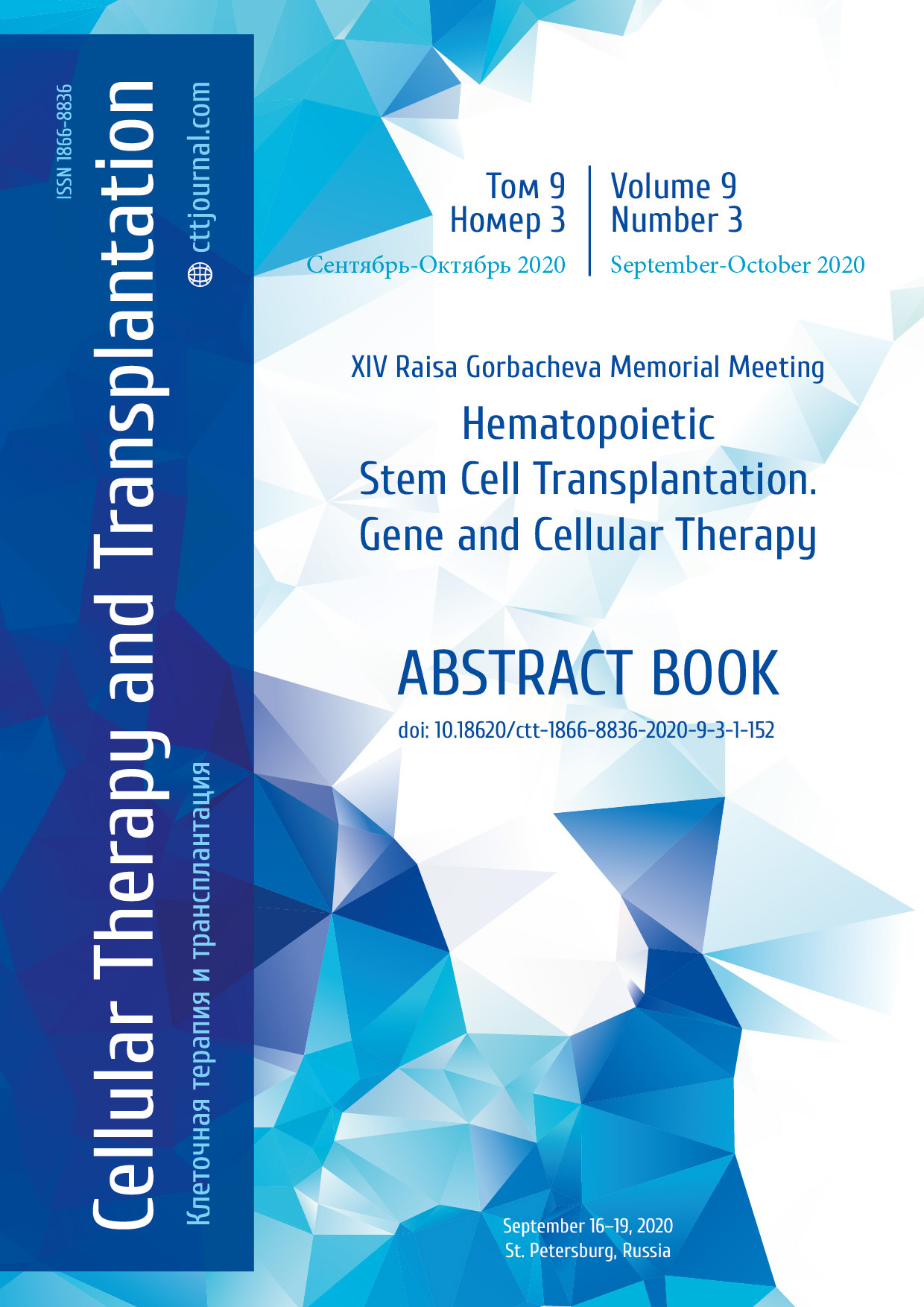LY-07. Polatuzumab Vedotin in combination with bendamustine and rituximab in relapsed or refractory diffuse large B-cell lymphoma
Olesya G. Smykova, Polina V. Kotselyabina, Kirill V. Lepik, Elena V. Kondakova, Yuri R. Zalyalov, Lilia V. Stelmakh, Ivan S. Moiseev, Natalia B. Mikhailova, Alexander D. Kulagin
RM Gorbacheva Research Institute of Pediatric Oncology, Hematology and Transplantation, Pavlov University, St. Petersburg, Russia
Contact: Dr. Olesya Smykova, e-mail: olesya.gen@gmail.com
Summary
Introduction
The outcomes of relapsed or refractory diffuse large B-cell lymphoma (r/r DLBCL) still remain dismal and therapeutic options for this patient population are limited. CD79b is a B-cell receptor component and expressed in DLBCL. Polatuzumab vedotin is an anti-CD79b antibody-drug conjugate linked to monomethyl auristatin E – antimitotic agent that disrupts microtubules by binding to tubulin and preventing its polymerization. Polatuzumab vedotin in combination with bendamustine and rituximab (Pola-BR) demonstrated efficacy in patients with r/r DLBCL.
Patients and methods
Nineteen patients with histologically confirmed r/r DLBCL received Pola-BR treatment in RM Gorbacheva Research Institute, Pavlov University clinic. All patients received bendamustine 90 mg/m2 on days 1 and 2, rituximab 375 mg/m2 on day 1 and polatuzumab vedotin 1.8 mg/kg on day 1 of each 21-day cycle. Median number of Pola-BR cycles was 3 (range 2-6). The PET-CT scan was performed before treatment initiation and after 2, 4, 6 cycles of Pola-BR. The responses were evaluated using Lugano 2014 criteria.
Results
The median age was 41 (range 20-66) years. The analysis include 15 patients who were evaluated for response to therapy (6 cases, de novo DLBCL, 3 cases; transformed follicular lymphoma; 5 cases, primary mediastinal B-cell lymphoma, and 1 patient with gray zone lymphoma). Most of the patients (n=9, 60%) had a primary refractory disease and 6 of them (40%) had a relapse. The medians for prior therapies were 3 (range 2-10) lines; 2 patients (13%) relapsed after autologous stem cell transplantation, and 4 patients (26%) – after CAR T-cell therapy. Stage III-IV of the disease was documented in 6 patients (40%), and bulky disease was revealed in 5 patients (33%) at the time of Pola-BR treatment. After median follow-up for 2 months (range 1-7), objective response (OR) after Pola-BR treatment was noted in 9 patients (60%), complete response (CR) and partial response (PR) in 6 (40%) and 3 patients (20%), respectively. At the time of analysis, all the responding patients remain in remission. Overall survival and progression-free survival rates were 86% and 52%, respectively. Treatment discontinuation due to progression of the disease occurred in 6 patients (40%). The most common adverse events were hematological toxicity: neutropenia grade III-IV in 6 cases (40%), anemia grade III-IV, in 4 patients (27%), thrombocytopenia grade III-IV in 1 case (7%), and one patient had maculopapular rash resolved with glucocorticosteroids.
Conclusion
Treatment efficacy of polatuzumab vedotin combined with bendamustine and rituximab in real clinical practice corresponds to the published scientific data.
Keywords
Diffuse large B-cell lymphoma, polatuzumab vedotin, bendamustine, rituximab.


